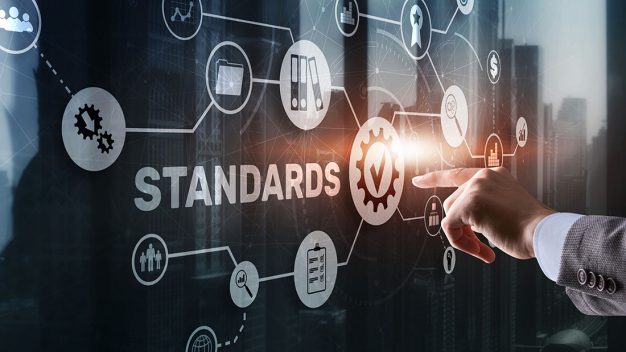- Standards, Guidelines
Standards are here to stay
You may not always notice when standards are in place, but they are present everywhere. World Standards Day on 14 October marked the 75th anniversary of the founding of the International Organization for Standardization (ISO). Switzerland has been a member of ISO since the beginning and still holds substantial weight within the organisation.
Urs Fischer, CEO of the Swiss Association for Standardization (SNV), knows that Switzerland has a powerful voice when it comes to the standards process in international committees. This applies not only to traditional topics such as ski bindings, cable cars or mechanical engineering, but also in other areas such as leadership principles and management issues. Swiss experts have the option of participating in standards committees within many sectors. The SNV actively calls for collaboration in the relevant professional groups. The idea is for people with the pertinent experience to set and examine practicable standards and then to adapt them later as necessary. Leading the development and monitoring process is the task of the SNV. It serves as a hub for standards and provides a link to international committees.
Standards are not laws
In our buildings and in our infrastructure, as well as in nearly every product available, standards are being put into practice. But what do they do? Standards allow for more efficient production, administration and storage. They lead to better compatibility between technical devices and equipment. They also encourage trust on the part of consumers. When standards are applied, it means that basic requirements are being met in regard to health, safety and the environment. As standards are checked every five years and revised as necessary, they remain up to date. They accommodate new areas or topics, for example, changes based on digitalisation or the inclusion of climate change as a forward-looking measure. They incorporate hot topics such as blockchains or megacities. They integrate social developments such as demographic changes or sustainability issues. In general, standards are widely accepted as they originate from practice and are created for practice. In certain instances, laws also refer to standards; in these cases standards take on a legally binding character. In all other cases, observing standards is voluntary because they are created by private organisations. However, as these organisations work closely with government bodies, standardisation is a good example of a successful Public-Private Partnership (PPP), a cooperative undertaking between the public and private sector.
What does SN EN ISO 9001:2015 mean?
The number 9001 refers to the standard for quality management. The year after the colon refers to when the revised version of the standard was published. If the standard is revised again, this year is replaced by the new publication date. Each standard is numbered using this system.
ISO stands for International Organization for Standardization. Over 165 countries worldwide are currently represented in ISO. The organisation's head office is in Geneva. ISO standards are developed for the global market. Switzerland is a member of this organisation and can participate in developing standards via the SNV.
The abbreviation EN indicates that this is a standard that was developed for the European area. In the case of EN ISO 9001, it means that the international standard was adopted by CEN (European Committee for Standardization).
The abbreviation SN means that a standard was developed for the Swiss market. Accordingly, SN EN ISO 9001 means that the international and European standard for quality management was also adopted into the Swiss body of standards. As Switzerland works on both European and international standardisation, usually the international or European standards are adopted and any contradictory national standards are withdrawn. In the foreword or appendix to the international standards, special national cases are mentioned or supplemented, but the actual content of the standard stays the same everywhere.
The CE marking
The CE marking is likely the most well-known label for consumers. It was created to identify products that conform to EU legislation. The CE marking is often described as a passport for the European single market. Manufacturers use it to show that they have incorporated all the special requirements of EU legislation into the product they are selling. As EU legislation refers to the relevant standards in the same way that Swiss legislation does, the CE marking also signifies that these standards are being observed. In Switzerland the CE marking is not mandatory, but as many Swiss products are also distributed to the EU market, it is widely seen on our products here.
Schweizerische Normen-Vereinigung (SNV)
8404 Winterthur
Switzerland









